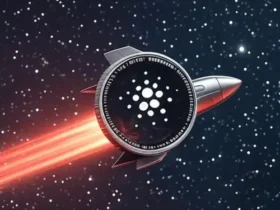Ripple stores 37% of cryptocurrency supply in guarantee deposits in the XRPL network.
Bitcoiners users consider that a control over 37% of XRP remains elevated.
Bill Morgan, a lawyer who works in the cryptocurrency ecosystem, revealed that the amount of XRP stored in Ripple controlled scrows decreased below 38% of the total cryptocurrency supply.
According to the same lawyerthis constitutes an achievement for Ripple, and points out that while the concentration of XRP by Ripple decreases, companies such as Blackrock or Microstrategy are increasingly seized from the Bitcoin supply.
The percentage of XRP owned by Ripple is decreasing. The percentage of bitcoin that Microstrategy and Blackrock possess is increasing. What will you say in a few years when the property percentages cross?
Bill Morgan, lawyer in the cryptocurrency ecosystem.
In a Blog article posted in 2017 The operation of the XRP saved in special scrows guarded by Ripple. At the time, Ripple blocked 55 billion currencies (55% of the total supply of 100 billion) in a series of warehouse deposits within the XRPL network. That percentage constituted more than half of the existing XRP supply.
Today, according to Bill Morgan, who attaches a capture with updated data, Only 38% of the supply is stored in these contracts.
What are Ripple’s scrows and what are they for?
The scrows created by Ripple are intended to store the supply while Its system releases a fixed amount of XRP per monthensuring that the cryptocurrency market is not flooded, which would dilute their price if the demand was missing.
The warranty deposit consists of independent deposit in the main book (XRPL) that release a total of one billion XRP each month during the next 55 months. This provides a higher limit to the amount of new XRP that can be put into circulation. The amount of XRP that is really put into circulation will probably be much less than this. Any additional XRP that will be placed every month in a new warranty deposit to release it in the first month in which no deposit is currently released.
XRPL, official cryptocurrency network.
While this represents an internal monetary policy of Ripple, which affects the price of cryptocurrency, part of the community considers that a portion still very large of the supply (37%) is under the control of a single entitymotivating criticism and concerns of decentralization.
That is the Hailey Lennon opiniona legal analyst of Forbes, who, using unrequal data, highlighted the fundamental difference between the distribution of the supply of Bitcoin and XRP.
XRP people want to talk about Blackrock and Satoshi. Blockrock has between 2 and 4% of Bitcoin and are mainly funds from its customers. Satoshi Wallets have 5% and have never moved or sold. Ripple has between 45% and 55% of the XRP supply and executives often sell.
Hailey Lennon, a legal analyst at Forbes.
Similar to what is happening within the Ethereum Foundation, Ripple executives They sell XRP to finance their expenses and operations, another user of the social network X comments.
Executives often sell because that is the only source of income of the company. This is how they pay their bills. A lot of their own tokens were given and then unsuspecting investors invested and now they sell from time to time to pay their bills.
Duncan Barger, User of Social Network X.
In response to that post, another user comments that BTC miners have the same strategy: sell part of the mining supply to pay costs and make profits. However, Bitcoin mining works according to A dynamic and not coordinated network of participants who do not control a “pre -prinished” or issued supply in the pastbut they obtain it as a subsidy thanks to their work.
As Cryptoics reported, Bitcoin mining and its participants are long distributed in the world, causing the level of decentralization of this network not to have a direct competitor.
Another X user rounds the discussion around Bitcoin and XRP commenting on the contributions of both cryptoactives. “My favorite is XRP, which continues at -40 % since its previous ATH, while BTC is at a +60 % since its previous ATH. Everything tends slowly to 0 compared to BTC in the long term, ”he said.
As Cryptooticies also reported in the last linked article, XRP had a negative price trend against Bitcoin (BTC) For 5 years: from November 19, 2019 to October 1, 2024.

XRP’s negative trend is clearly seen in a graph that compares the price of cryptocurrency against Bitcoin’s price. From its area of maximum historical prices, XRP has fallen into its price around 80% compared to the price of BTC from 2018 to February 2025.






Leave a Reply